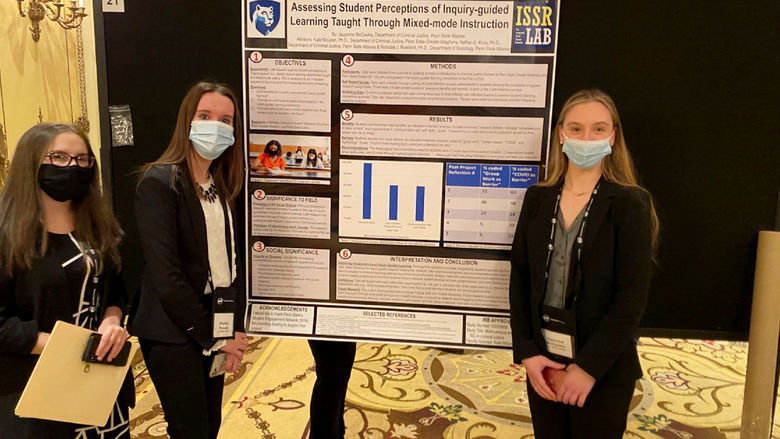PUTEAUX, France–(BUSINESS WIRE)–Recordati Rare Diseases today announces the publication of long-term results from the open label extension period of the Phase III LINC 3 study of Isturisa® in The European Journal of Endocrinology.1 These data support the long-term utility of Isturisa® in the maintenance treatment of patients with Cushing’s disease and reinforce Isturisa as an effective and well-tolerated oral therapy. Isturisa® is indicated in the EU for the treatment of adult patients with endogenous Cushing’s syndrome,2 a rare and debilitating condition of hypercortisolism caused by pituitary adenoma (Cushing’s disease).3
The Phase III LINC 3 study was the largest prospective trial of an adrenal steroidogenesis inhibitor to date. A total of 106 of 113 patients who completed the 48-week core phase elected to continue receiving open-label Isturisa® during the extension phase, which ended after all patients completed ≥72 weeks of treatment or stopped the study. The median duration of exposure to Isturisa® from the start of the main study to the end of the extension was 130 weeks (range 1 to 245).
The main results published in the manuscript titled “Long-term results of osilodrostat in Cushing’s disease: extension of the LINC 3 study” include:1
-
The normalization of mean urinary free cortisol (mCFU) achieved during the central phase was maintained, with a mean CFU ≤ upper limit of normal (ULN) throughout the extension; at
week 72, 86/106 (81.1%) patients had mUFC ≤ULN -
The mean median dose of osilodrostat from baseline to end of the Core Study was
7.4 mg/day (range 0.8 to 46.6); the dose received stabilized during the extension, indicating that treatment with Isturisa provides a sustained response without requiring a dose increase over time -
Improvements observed in most cardiovascular and metabolic parameters associated with Cushing’s disease at the end of the main study were maintained or further improved with long-term treatment
-
Patient-reported Quality of Life (QoL) scores (CushingQoL and Beck Depression Inventory) also continued to improve during long-term treatment
-
Improvements in physician-assessed severity scores for physical manifestations of hypercortisolism were evident within 12 weeks of treatment with Isturisa; the proportion of patients assessed with improvement was maintained or increased with longer follow-up, including improvement in hirsutism in female patients
-
In female patients, estradiol and testosterone levels tended to return to baseline levels with longer follow-up
-
Isturisa® was well tolerated in most patients, with no unexpected adverse events (AEs) compared to those observed in the central phase; AEs of special interest, including AEs related to hypocortisolism and adrenal hormone precursors, were generally reported less frequently during the extension phase than during the core phase
“The results of our large trial, where patients with Cushing’s disease elected to continue treatment with osilodrostat during the extension, support osilodrostat as an effective long-term treatment option for patients with this disease. chronic disease,” said Maria Fleseriu, professor of medicine (endocrinology) and neurological surgery and director of the Pituitary Center at Oregon Health & Science University, Portland, OR, USA. “Importantly, in addition to providing long-term normalization of cortisol, continued treatment with osilodrostat for more than 72 weeks led to durable improvements in the clinical signs and physical manifestations of hypercortisolism and was generally well tolerated.”
“These data support Isturisa® as a viable long-term medical treatment option for maintaining control of cortisol levels and hypercortisolism-related signs and symptoms in patients with Cushing’s disease, building on the central phase of the positive phase III LINC 3 study, published in The Lancet Diabetes and Endocrinology in 2020,4said Alberto M. Pedroncelli, Head of Clinical Development and Medical Affairs, Global Endocrinology, Recordati AG. “Recordati Rare Diseases is committed to improving the lives of patients with this rare, debilitating and life-threatening disease. On behalf of Recordati Rare Diseases, I would like to thank everyone who contributed to LINC 3 and the LINC clinical development program.
The full publication is available here.
About Cushing’s Syndrome
Cushing’s syndrome is a rare condition caused by chronic exposure to excessive levels of cortisol from either an exogenous source (eg, medication) or an endogenous source.5 Cushing’s disease is the most common cause of endogenous Cushing’s syndrome and results from excessive secretion of adrenocorticotropic hormone from a pituitary adenoma, a tumor of the pituitary gland.5.6 There is often a delay in the diagnosis of Cushing’s syndrome, which consequently leads to a delay in the treatment of patients.seven Patients who are exposed to excessive levels of cortisol for a prolonged period have increased comorbidities associated with the cardiovascular and metabolic systems, which consequently reduces quality of life and increases the risk of mortality.3.6 To alleviate the clinical signs associated with excessive cortisol exposure, the primary goal of treatment in Cushing’s syndrome is to return cortisol levels to normal.8.9
About CLICK 3
LINC 3 is a 48-week, multicenter, prospective trial with an 8-week, double-blind, randomized washout phase, with an optional extension phase to assess the safety and efficacy of Isturisa in patients with Alzheimer’s disease. Cushing. Evaluation of mUFC response rate, change in mUFC, change in cardiovascular and metabolic parameters, change in patient-reported outcomes, changes in physical manifestations of hypercortisolism as well as general AEs and AEs of special interest were included as secondary endpoints. LINC 3 recruited 137 patients with persistent or recurrent Cushing’s disease or those de novo disease who were not candidates for surgery.4
About Isturisa®
Isturisa® is an oral 11β-hydroxylase (CYP11B1) inhibitor, which catalyzes the last step of cortisol synthesis in the adrenal glands.2 Isturisa® is available as 1 mg, 5 mg and 10 mg film-coated tablets.2 Isturisa® is approved for the treatment of adult patients with endogenous Cushing’s syndrome in the EU.
Isturisa® obtained marketing authorization from the European Commission on January 9, 2020. For detailed recommendations on the appropriate use of this product, please consult the summary of product characteristics.2
References
1. Fleseriu M, Newell-Price J, Pivonello R et al. Long-term results of osilodrostat in Cushing’s disease: extension of the LINC 3 study The European Journal of Endocrinology 2022.
2. Summary of Isturisa® product characteristics. May 2020.
3. Ferriere A, Tabarin A. Cushing’s syndrome: treatment and new therapeutic approaches. Best Practice Res Clin Endocrinol Metab 2020;34:101381.
4. Pivonello R, Fleseriu M, Newell-Price J et al. Efficacy and safety of osilodrostat in patients with Cushing’s disease (LINC 3): a phase III multicenter study with a randomized double-blind withdrawal phase. Lancet Diabetes Endocrinol 2020;8:748-61.
5. Lacroix A, Feelders RA, Stratakis CA et al. Cushing’s Syndrome. Lancet 2015;386:913-27.
6. Pivonello R, Isidori AM, De Martino MC et al. Complications of Cushing’s syndrome: state of the art. Lancet Diabetes Endocrinol 2016;4:611-29.
7. Rubinstein G, Osswald A, Hoster E et al. Time to diagnosis of Cushing’s syndrome: a meta-analysis based on 5367 patients. J Clin Endocrinol Metab 2020;105.
8. Nieman LK, Biller BM, Findling JW et al. Treatment of Cushing’s syndrome: a clinical practice guideline from the Endocrine Society. J Clin Endocrinol Metab 2015;100:2807-31.
9. Fleseriu M, Auchus R, Bancos I et al. Consensus on the diagnosis and management of Cushing’s disease: an update of the guidelines. Lancet Diabetes Endocrinol 2021;9:847-75.
Recordati Rare Diseases, the company’s EMEA headquarters are located in Puteaux, France, with global headquarters offices in Milan, Italy.
For a complete list of products, please click here: www.recordatirarediseases.com/products.
Registrationcreated in 1926, is an international pharmaceutical group, listed on the Italian Stock Exchange (Reuters RECI.MI, Bloomberg REC IM, ISIN IT 0003828271), with a total workforce of more than 4,300 people, dedicated to research, development, manufacturing and marketing of pharmaceutical products. Based in Milan, Italy, Recordati is present in Europe, Russia and other CIS countries, Ukraine, Turkey, North Africa, United States of America, Canada, Mexico, some South American countries, Japan and Australia. An effective field force of medical visitors promotes a wide range of innovative, proprietary and licensed pharmaceutical products in several therapeutic areas, including a specialist business dedicated to rare disease treatments. Recordati is a partner of choice for licensing new products for its territories. Recordati engages in the research and development of new specialties with an emphasis on treatments for rare diseases. Consolidated revenue for 2021 was €1,580.1 million, operating profit €490.2 million and net profit €386.0 million.
For more information:
Recordati website: www.recordatirarediseases.com
This document contains forward-looking statements relating to future events and the future operational, economic and financial results of the Recordati group. By their nature, forward-looking statements involve risks and uncertainties because they depend on the occurrence of future events and circumstances. Actual results may therefore differ materially from those projected for a variety of reasons, most of which are beyond the control of the Recordati Group. The information on the pharmaceutical specialties and other products of the Recordati group contained in this document is only intended to inform about the activities of the Recordati group and, therefore, as such, it is not intended as an indication or a medical scientific recommendation, nor as an advertisement.
EMEA/HQ/PRO/IST/OTH/Aug-22/365







